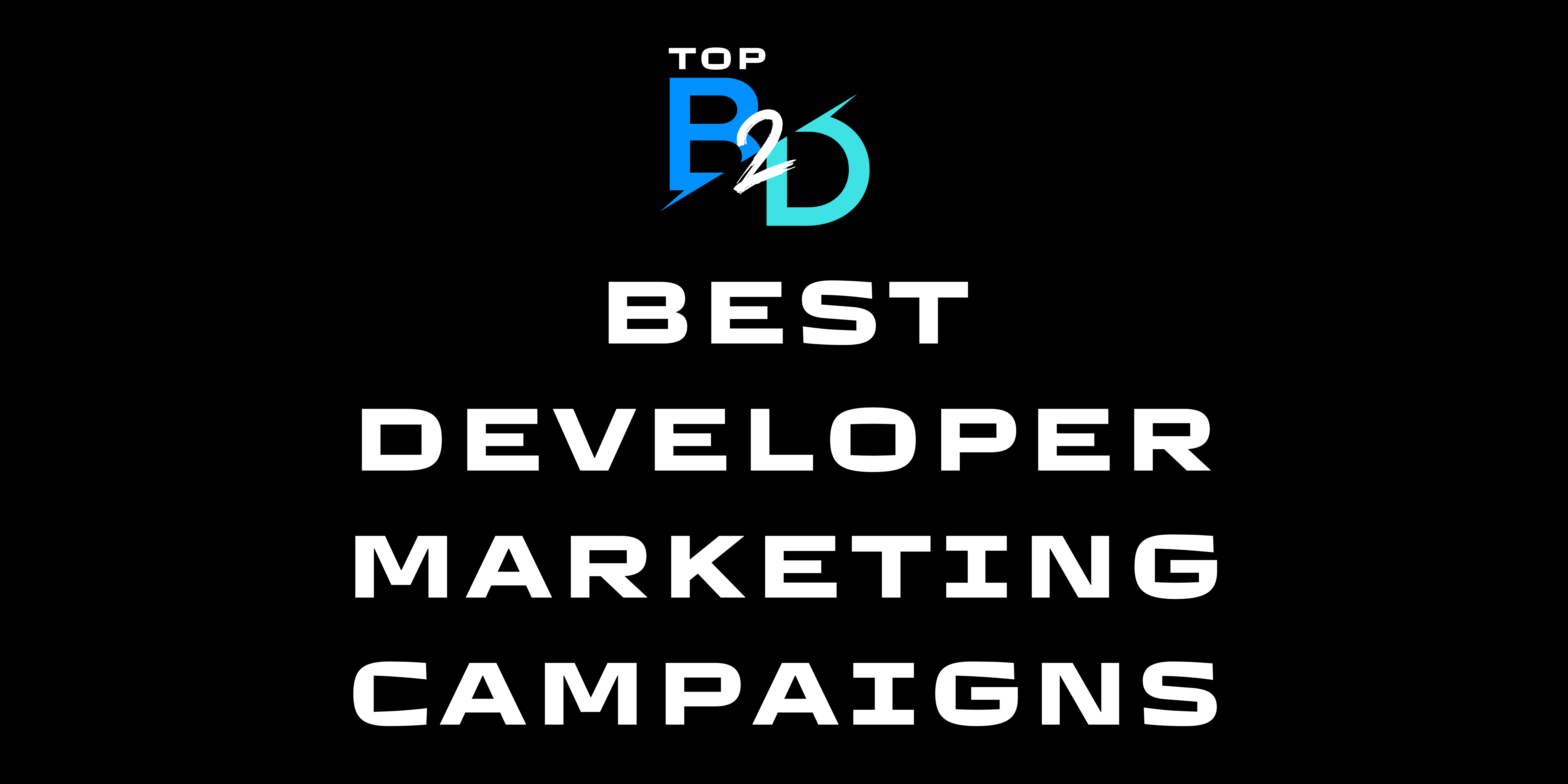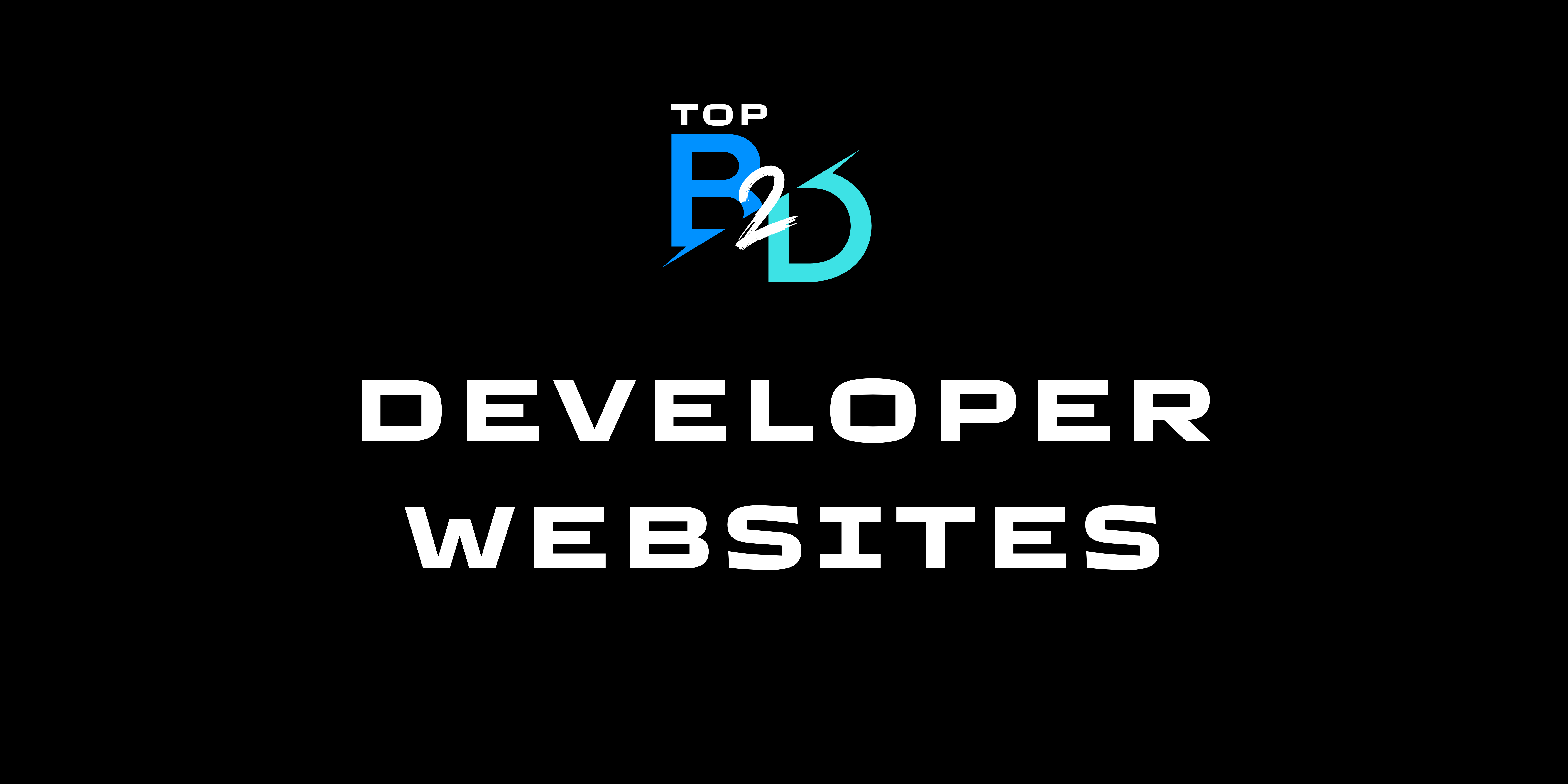Understanding the Complexities of B2D Marketing
B2D, or Business to Developer Marketing, is a nuanced arena of business strategy that necessitates a deep understanding of a unique target demographic: developers. The complexities of B2D marketing lie in understanding how to effectively communicate and engage with a highly technical, problem-solving group of professionals.
This innovative form of marketing takes into account a specific customer base that is not only concerned with the technical superiority of a product, but also its potential to solve complex problems and deliver results more effectively. That’s why, when it comes to launching a B2D marketing campaign, the most successful strategies are oriented towards demonstrating technical proficiency and clear benefits from a developer’s perspective.
Why is B2D Marketing Unique and Challenging?
B2D Marketing is unique primarily because of its focus on a demographic with a deep understanding of technology and industry standards. These are individuals that require more than just superficial product information. They need a deep dive into the functionalities, benefits, and potentials of a product or service, honing in on exactly how it stands apart from competition in its ability to streamline operations. B2D strategies involve sophisticated technical documentation and demonstrations, well articulated product use-cases, and successful client testimonials to back the claims.
The Power of Community in B2D Marketing
Another crucial element of B2D marketing is building and leveraging a community of developers. Developers value peer opinion and will often turn to online communities for advice or reviews before trying a new product. Thus, a strong, supportive and engaged developer community is invaluable to the successful execution of a B2D marketing strategy. Continuous engagement through forums, webinars, blogs, and thought leadership content can help cultivate a robust community that stands as a testament to the strength and usefulness of a product or service.
Pros and Cons of B2D for Small Businesses
When it comes to digital marketing strategies, Business to Developer (B2D) has become an emerging focus for many organizations. Small businesses, in particular, may find deciding whether or not to adopt this approach quite challenging. Understanding the pros and cons of B2D for small businesses can help in making a more informed decision.
Pros of B2D
B2D involves making products or services attractive to developers, a strategy which can have several significant advantages. First, incorporating B2D can lead to innovation and improvement of your products or services, as developers can provide valuable feedback. Furthermore, a B2D approach can also result in a form of grassroots marketing as developers who find value in your offerings may recommend you to their networks.
Cons of B2D
Despite these advantages, there are, however, a few potential disadvantages that small businesses should consider. To begin with, B2D demands a considerable investment in resources and time to create developer-friendly products and services. This might be quite challenging for companies with limited resources. In addition, unless properly implemented, B2D can result in a fragmentation of target markets. It’s important to remember that not all products and services are suitable for a B2D approach.
In conclusion, businesses should carefully weigh these pros and cons before deciding whether to implement a B2D strategy. Building a relationship with developers can be beneficial, but it’s critical to understand this strategy’s potential drawbacks. Now, let’s explore another aspect that can impact small businesses – the effects of rapid technological change.
Impacts of Rapid Technological Change on Small Businesses
Maximising Profits with B2D Business Model
In the world of e-commerce and online business, one cannot overlook the impact of an effective and robust business model. One such model that has generously been gaining recognition for its proficiency in boosting revenue is the B2D Business Model.
The B2D, or Business-to-Developer model, offers a unique perspective on business growth and profit maximisation. This model is aimed at providing developers with the necessary tools, services or products they need to streamline their processes. By understanding and effectively leveraging this model, businesses can create avenues for steady, exponential profit growth.
Understanding the B2D Business Model
The B2D model caters specifically to the needs of software developers. It’s a platform where businesses offer APIs, SDKs, and other technical components, which help developers in creating more efficient software. The key benefits include, but are not limited to, reduced time to market, cost reduction, and improved developer productivity.
This model creates a win-win situation. On one hand, developers benefit from getting high quality, time-saving tools at their disposal. On the other, businesses that adopt this model find innovative ways to generate revenue, either through subscription fees, royalty fees or even through partnerships for product development.
The Impact on Profits
A successful B2D model leads not just to increased profits, but it can significantly enhance customer loyalty as well. By offering valuable resources to developers, businesses can foster long-term relationships, which inevitably leads to repeat business and increased profits. Moreover, as developers utilise the products or services offered, they concurrently contribute to product testing and enhancement, ultimately leading to a stronger, more valuable product in the market.
Navigating the Challenges of B2D Business Model
How B2D is Changing the Face of Industry
The concept of Business-to-Developer (B2D) has emerged as a pivotal game-changer in today’s industrial landscape. B2D can be described as the approach enterprises adopt to market their products not only to businesses (B2B) or consumers (B2C) but directly to developers. This growing trend has begun to reshape various industry sectors.
The Impact of B2D on Software Development
The direct involvement of developers in the decision-making process is leading to efficient and effective software development. Implementing B2D models means that tools and software are no longer simply purchased, but often built directly by the developers according to precise requirements and needs. This proactive approach ensures that software serves its intended purpose perfectly and that unnecessary features are prevented.
The Shift Towards Developer-Centric Models
In addition to reshaping the process of product development, B2D approach is enabling companies to adopt developer-centric models. It represents a shift in power from corporate executives to developers who have the capability to create and innovate products directly. By empowering developers, companies are able to achieve higher levels of innovation and productivity.
In this changing landscape, companies that have successfully embraced the B2B model are at the forefront of their respective industries. They are the ones setting the pace in innovation and breaking new ground in their market spaces. The potential of B2D is genuinely transformative, and its impact can already be observed across multiple sectors of the industry.
How Companies are leveraging B2D…
The Role of B2D in Boosting Business Growth
As more businesses seek to innovate and improve operations, B2D (Business-to-Developer) strategies become essential game-changers in facilitating growth. The B2D model centers on providing resources, tools, and support to developers, enabling them to create better products and solutions that drive a business’s growth, thereby bridging the gap between companies and developer communities.
Strengthening Business Infrastructure
A significant role of B2D in boosting business growth is in strengthening a company’s infrastructure. Developers have the ability and expertise to build, refine, and maintain the crucial digital and technical platforms that support a business’s operations. This is especially pertinent in today’s era where digital advancement is no longer a luxury but a necessity for survival in competitive markets. Employing a B2D strategy can ensure that businesses are technologically upgraded and prepared for future challenges.
Accelerating Innovation
Fostering innovation is another pivotal aspect where B2D can stimulate business growth. With access to a plethora of resources and tools, developers can create innovative products and services which are in line with consumer preferences and market trends. B2D not only accelerates the pace of innovation but also propels businesses to anticipate and respond swiftly to changes in the business landscape.
Driving Customer Satisfaction
At its core, B2D also contributes to improving customer satisfaction. A dedicated team of developers can enhance the customer experience by addressing technical issues, implementing necessary upgrades, and fine-tuning software applications for smoother user interactions. The improved service quality resulting from robust B2D practices, can truly boost customer satisfaction and loyalty, which is pivotal for bolstering business growth.
Exploring Opportunities in B2D Market
Business to Developer (B2D) marketing involves companies selling their products directly to developers, essentially making the developer both the customer and the end-user. Capitalizing on opportunities in the B2D market not only requires a deep understanding of your product but also of your audience— who are technically skilled, detail-oriented, and deserve a product that can make their lives easier.
Understanding the B2D Market
Developers’ preferences and purchasing habits differ significantly from those of traditional consumers. They highly value technical depth, utility, flexibility, and the capacity to customize — elements that should be central to your product offering. The more your product helps streamline and improve their coding process, the better your chances of success in the B2D market.
Effective B2D Marketing Strategies
- Intrinsic Value: Your product should deliver a clear and evident value. It should solve a problem, improve efficiency, or offer a service that can significantly aid a developer’s coding process.
- Communicating Technicalities: Effectively communicate how your product works, its technical aspects, and how it can be integrated into their current workflow. This fosters trust and positions your brand as a reliable partner.
- Continuous Improvement: Make sure to continuously improve your product based on feedback from developers. They will appreciate a company that listens to their concerns and promptly implements necessary changes.
Navigating Challenges in the B2D Market
Top Strategies for Implementing B2D for Startups
As a startup hoping to succeed in today’s highly competitive digital landscape, focusing on Developers as a key business audience is imperative. Implementing a B2D or Business-to-Developer strategy effectively can position your startup as a serious contender in the tech space.
B2D—unlike other commercial models that tend to focus purely on end consumers or businesses—emphasizes on building products and services that developers find useful. The pivotal aspect is creating a platform where developers feel empowered to learn, experiment, and integrate their own software with yours. Hence, the question arises, What are the top strategies for implementing B2D for startups?
Understand Your Developer Audience
Understanding your audience’s needs and preferences should be the first step when planning your B2D strategy for your startup. Developers prefer technically robust solutions, comprehensive documentation and prompt support when working on integration projects. Hence, investing in these areas will definitely yield higher engagement rates.
Offer Useful APIs and SDKs as a Service
Application Programming Interfaces (APIs) and Software Development Kits (SDKs) are cornerstones when we talk about B2D. By providing efficient APIs and SDKs, your startup is effectively providing programmers a touchpoint to your software.
Create a Developer-First Culture
Last but not least, the strategy that has proven most effective is creating a “developer-first” culture within your startup. Recognize that developers are one of your most important customers and always ensure that your product and services cater to their needs.
Measuring Success in your B2D Strategy
Implementing the B2D model is only half the battle won. The next critical step for startups is to set up reliable mechanisms to measure success…
Incorporating B2D in Your Business: A Step-by-Step Guide
Business to Developer, commonly abbreviated as B2D, is a business model that focuses on creating products and services directly for developers. B2D has emerged as a significant trend in today’s tech-centric world with the objective of enabling developers with powerful tools and technologies for seamless software creation and deployment.
Understanding the Value of B2D
Implementing a B2D model in your business is not merely a trend—it’s about creating sustainable value. By implementing strategies that cater directly to developers, you are opening up avenues for innovative solutions and applications that enhance productivity and efficiency. Moreover, by empowering developers with the right resources, it provides an opportunity to directly influence the direction of the product offerings according to the market’s dynamic needs.
Key Steps in Implementing B2D
- Identifying the Needs: To integrate the B2D methodology effectively, it’s crucial to understand the wants and requirements of developers. This includes a comprehensive understanding of their preferential platforms, languages, tools, and more.
- Delivering Relevant Products and Services: Once the specific needs have been identified, the next step is to design suitable tools, products, or services. Delivery has to be consistent, and it should align with the identified needs.
- Maintaining Two-Way Communication: Developing a rapport with developers by maintaining an open line of communication is critical. This ensures you receive the necessary feedback to adjust your strategy and meet their evolving needs.
While implementing B2D methodologies requires thoughtful planning and execution, the rewards can be substantial. It opens up new avenues for growth and innovation while fostering a closer bond with those who interface with your products on a daily basis—the developers.
B2D: Understanding Your Developer Audience
The B2D model, also known as Business to Developers, is a relatively new approach to marketing that focuses on services, tools, and products specifically designed for developers. One of its core tenets is understanding your developer audience, which is crucial to tailor your messaging and offerings in a relevant and engaging way.
The Importance of Understanding the Developer Audience
Given their technical expertise and demand for efficient, high-performance solutions, developers represent a unique audience. The key to B2D marketing lies in appreciating their needs, preferences, languages, and challenges. By understanding these elements, businesses can create meaningful connections, foster trust, and ultimately drive conversions with this specific audience segment.
Pain Points and Preferences of Developer Audience
Developers value function over form, crave for out-of-the-box ideas, and are often quick to adopt new technologies. Simplicity, reliability and efficiency are paramount for them. Catering to these preferences can help businesses position themselves favorably in the minds of developers.
The identification and solution of pain points are other key aspects to understand about a developer audience. Just like any customer segment, developers have their unique set of challenges. Addressing these in your products and services can significantly improve their experience and increase their loyalty to your brand.
Developing B2D Marketing Strategies
Future Trends in B2D: What You Should Know
As the tech landscape continues to evolve, it’s imperative to stay a step ahead, especially in the Business-to-Developer (B2D) sector. The B2D sector has seen significant innovation and growth over the recent years. Developers, being critical influencers in their organizations’ purchasing decisions, necessitates businesses to understand and adapt to rising trends in this unique market.
B2D API Economy is Expanding
The API economy, one of the vital aspects of the B2D market, is poised to grow significantly. In this ecosystem, APIs are no longer just tools for integration—they’re often the product itself. Businesses are adopting API-first development, recognizing the value in providing robust, scalable, and developer-friendly API products. And as developers continue to play a significant role in technology adoption decisions, the API economy’s importance seems likely to climb.
Increasing Demand for Developer Experience (DX)
Another major trend in the B2D market is the increased focus on creating exceptional Developer Experience (DX). With the growing competition, businesses need to provide developers with an environment that allows them to build, test, and deploy applications as quickly and smoothly as possible. Developer portals, SDKs, and comprehensive documentation are now critical tools for businesses aiming to win over developers. A superior developer experience leads to increased adoption of your technology and, therefore, business growth.
Rising Importance of Open Source Software
Open source software has been a disruptor in the B2D sector, and its influence is growing. Open source tools and platforms let developers leverage and contribute to existing solutions—rather than building from scratch—saving both time and resources. Its benefits like enhanced security, interoperability, and customization possibilities will only continue to fuel its adoption. And as businesses work to engage developers – using open-source technologies and contributing back to the community could be a key differentiation factor.






